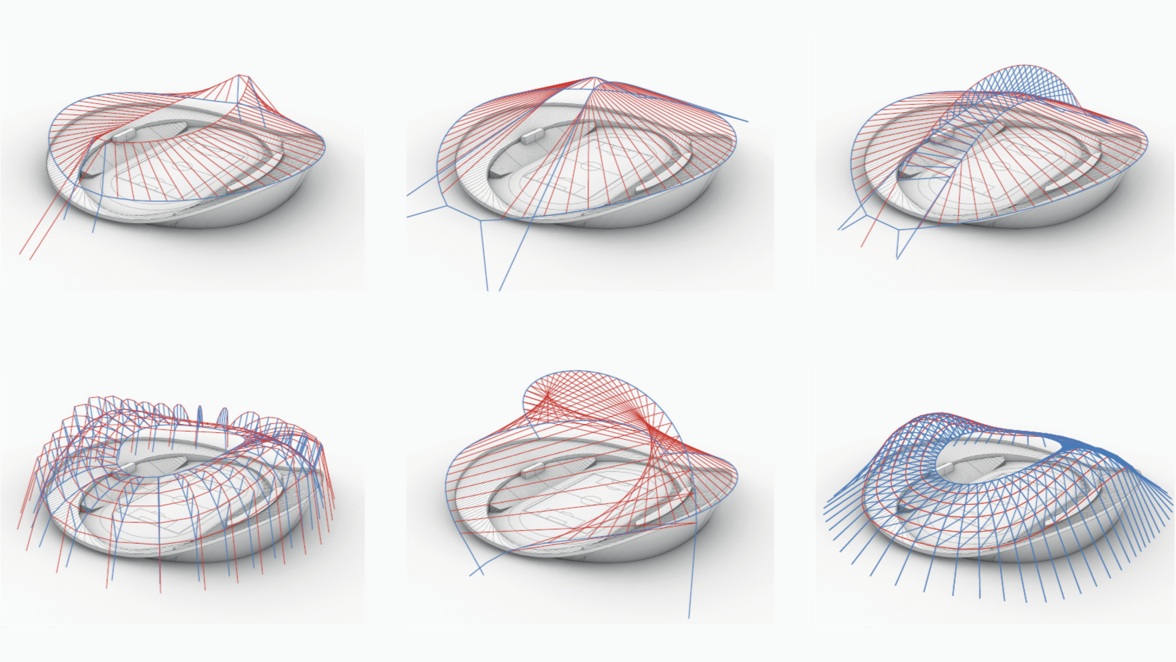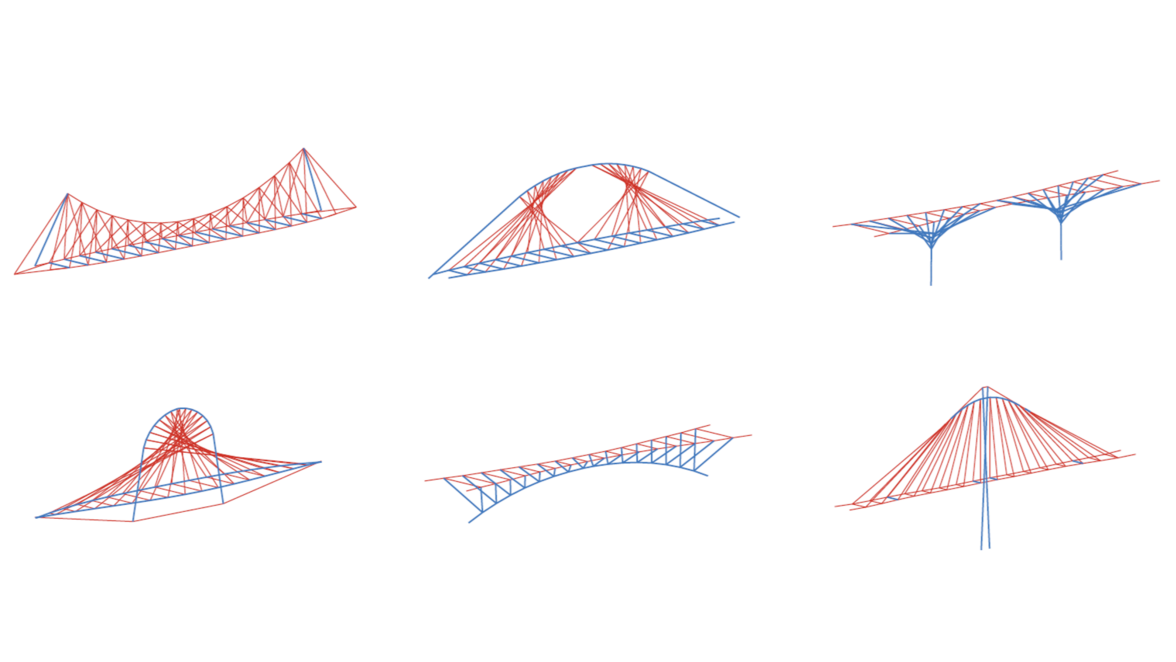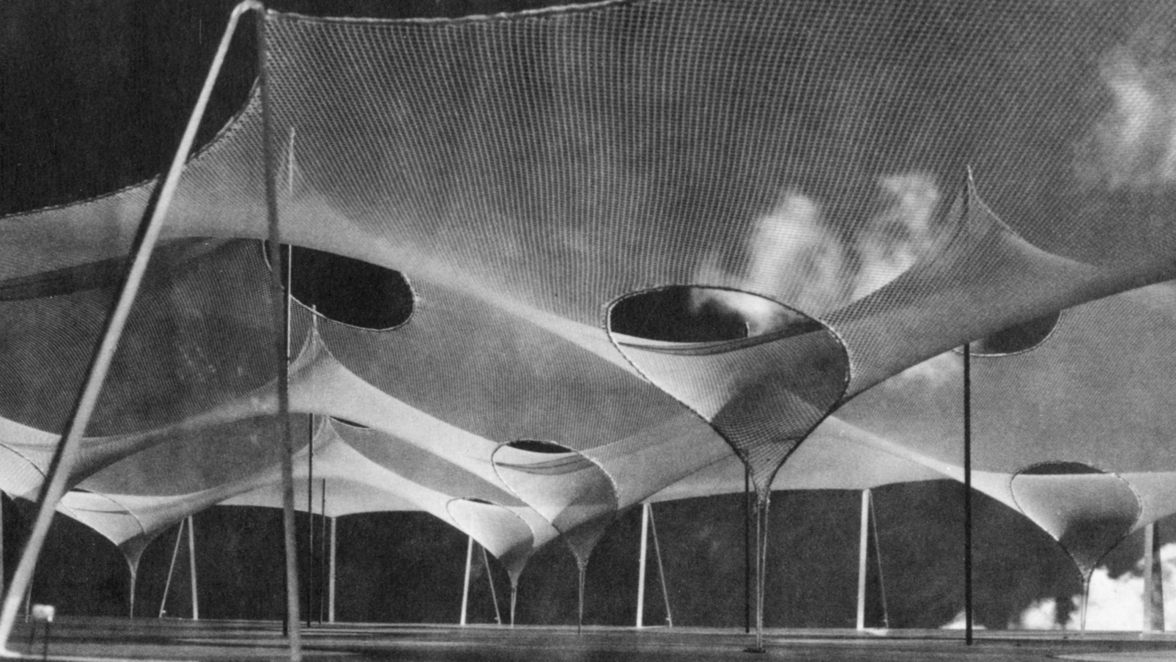Computational Structural Design
The module Computational Structural Design introduces fundamental concepts and methods for applying computational tools and algorithmic strategies in structural design. The course combines theoretical foundations with hands-on implementation, demonstrating how digital workflows can be integrated into the architectural design process to develop efficient, innovative, and expressive structural systems.
Students learn to use digital modelling and analysis tools such as Rhino 3D and Grasshopper, gaining an understanding of parametric design principles and their relevance in architectural and engineering practice. Building on this foundation, the course explores established structural form-finding methods—including Dynamic Relaxation, the Force Density Method, and Combinatorial Equilibrium Modelling—alongside approaches to structural analysis and optimization. Particular emphasis is placed on the use of Finite Element Analysis to evaluate, refine, and improve computationally generated design proposals. Through lectures, tutorials, and workshops, students develop their ability to conceptualize, model, analyze, and critically assess structural design solutions.
Upon completion, students are able to apply computational tools for the generation and evaluation of structural systems, develop and test digital models and algorithms, interpret simulation and prototyping results, and present and critique their designs effectively. The course encourages critical engagement with computational methods and fosters a reflective design process that connects structural logic with architectural intention.
Assessment is based on a series of twelve individual assignments completed over the semester. Each task builds on the content of the lectures and is developed further in workshops. Feedback is provided continuously during tutorials and individual consultations, supporting a step-by-step development of design and analytical skills. Basic knowledge of statics, mechanics, and architectural design is required for participation; prior experience with digital modelling tools such as Rhino and Grasshopper is recommended but not mandatory.
Further information can be found on TUMonline.



